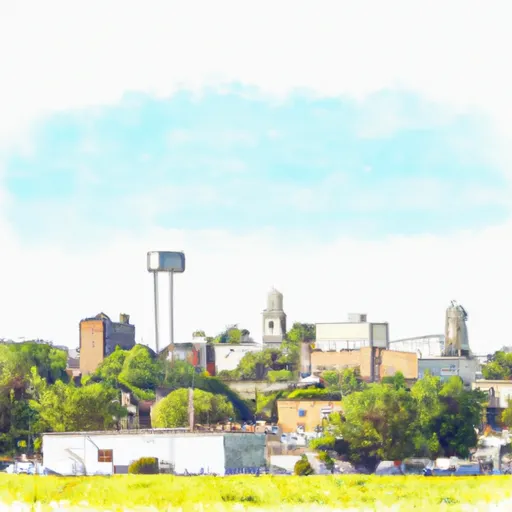-
 Snoflo Premium
Snoflo Premium
Get unlimited access to all our content
With no Ad interruptions! - Start Your Free Trial Login with existing account
Walnut
Eden Index
Climate
7.6
•
Recreation
4.2
•
Community
•
Safeguard
4.5/10

Walnut, Iowa is a charming small town located in the western part of the state. The climate in Walnut is classified as humid continental, characterized by hot and humid summers, and cold winters with moderate snowfall. Summers bring average temperatures in the mid-80s Fahrenheit, while winters can dip below freezing.
The hydrology constituents of Walnut are primarily influenced by the surrounding landscape. The town is situated near the Nishnabotna River, which offers opportunities for fishing and boating enthusiasts. Additionally, Walnut Creek flows through the town, providing a scenic backdrop for outdoor activities.
Outdoor recreation opportunities in Walnut are abundant. The town is surrounded by beautiful natural landscapes, making it a haven for hikers, bikers, and nature enthusiasts. Nearby parks and forests offer trails for exploration, allowing visitors to immerse themselves in the beauty of the Iowa countryside. Those seeking water-based activities can enjoy fishing, canoeing, and kayaking on the rivers and lakes in the area.
In summary, Walnut, Iowa offers a pleasant climate with distinct seasons, a hydrology influenced by the Nishnabotna River and Walnut Creek, and a variety of outdoor recreation opportunities for individuals to enjoy nature's wonders.
What is the Eden Index?
The Snoflo Eden Index serves as a comprehensive rating system for regions, evaluating their desirability through a holistic assessment of climate health, outdoor recreation opportunities, and natural disaster risk, acknowledging the profound impact of these factors on livability and well-being.
Climate Health Indicator (CHI): 7.6
Walnut receives approximately
870mm of rain per year,
with humidity levels near 81%
and air temperatures averaging around
10°C.
Walnut has a plant hardyness factor of
5, meaning
plants and agriculture in this region thrive during a short period during spring and early summer. Most
plants will die off during the colder winter months.
By considering the ideal temperature range, reliable water supplies, clean air, and stable seasonal rain or snowpacks, the Climate Health Indicator (CHI) underscores the significance of a healthy climate as the foundation for quality living.
A healthy climate is paramount for ensuring a high quality of life and livability in a region, fostering both physical well-being and environmental harmony. This can be characterized by ideal temperatures, reliable access to water supplies, clean air, and consistent seasonal rain or snowpacks.
Weather Forecast
Streamflow Conditions
Missouri-Nishnabotna
Area Rivers
Missouri-Nishnabotna
Snowpack Depths
Missouri-Nishnabotna
Reservoir Storage Capacity
Missouri-Nishnabotna
Groundwater Levels
Recreational Opportunity Index (ROI): 4.2
The Recreational Opportunity Index (ROI) recognizes the value of outdoor recreational options, such as parks, hiking trails, camping sites, and fishing spots, while acknowledging that climate plays a pivotal role in ensuring the comfort and consistency of these experiences.
Access to outdoor recreational opportunities, encompassing activities such as parks, hiking, camping, and fishing, is crucial for overall well-being, and the climate plays a pivotal role in enabling and enhancing these experiences, ensuring that individuals can engage in nature-based activities comfortably and consistently.
Camping Areas
| Campground | Campsites | Reservations | Toilets | Showers | Elevation |
|---|---|---|---|---|---|
| Sunnyside Park Campground | None | 1,204 ft | |||
| Lyons Park | None | 1,214 ft | |||
| Botna Bend County Park | 40 | 1,108 ft | |||
| Pilot Grove Co Park | 16 | 1,184 ft | |||
| Pioneer City Park | None | 1,080 ft | |||
| Pierce Creek Rec Area | 20 | 1,078 ft | |||
| Cold Spring Park | 80 | 1,122 ft | |||
| Cocklin Fish Farm | 56 | 1,110 ft | |||
| Viking Lake State Park | 120 | 1,138 ft | |||
| Legion City Park | 10 | 1,033 ft |
Nearby Ski Areas
Catastrophe Safeguard Index (CSI):
The Catastrophe Safeguard Index (CSI) recognizes that natural disaster risk, encompassing floods, fires, hurricanes, and tornadoes, can drastically affect safety and the overall appeal of an area.
The level of natural disaster risk in a region significantly affects safety and the overall livability, with climate change amplifying these risks by potentially increasing the frequency and intensity of events like floods, fires, hurricanes, and tornadoes, thereby posing substantial challenges to community resilience and well-being.
Community Resilience Indicator (CRI):
The Community Resilience Indicator (CRI) recognizes that education, healthcare, and socioeconomics are crucial to the well-being of a region. The CRI acknowledges the profound impact of these elements on residents' overall quality of life. By evaluating educational resources, healthcare accessibility, and economic inclusivity, the index captures the essential aspects that contribute to a thriving community, fostering resident satisfaction, equity, and social cohesion.

